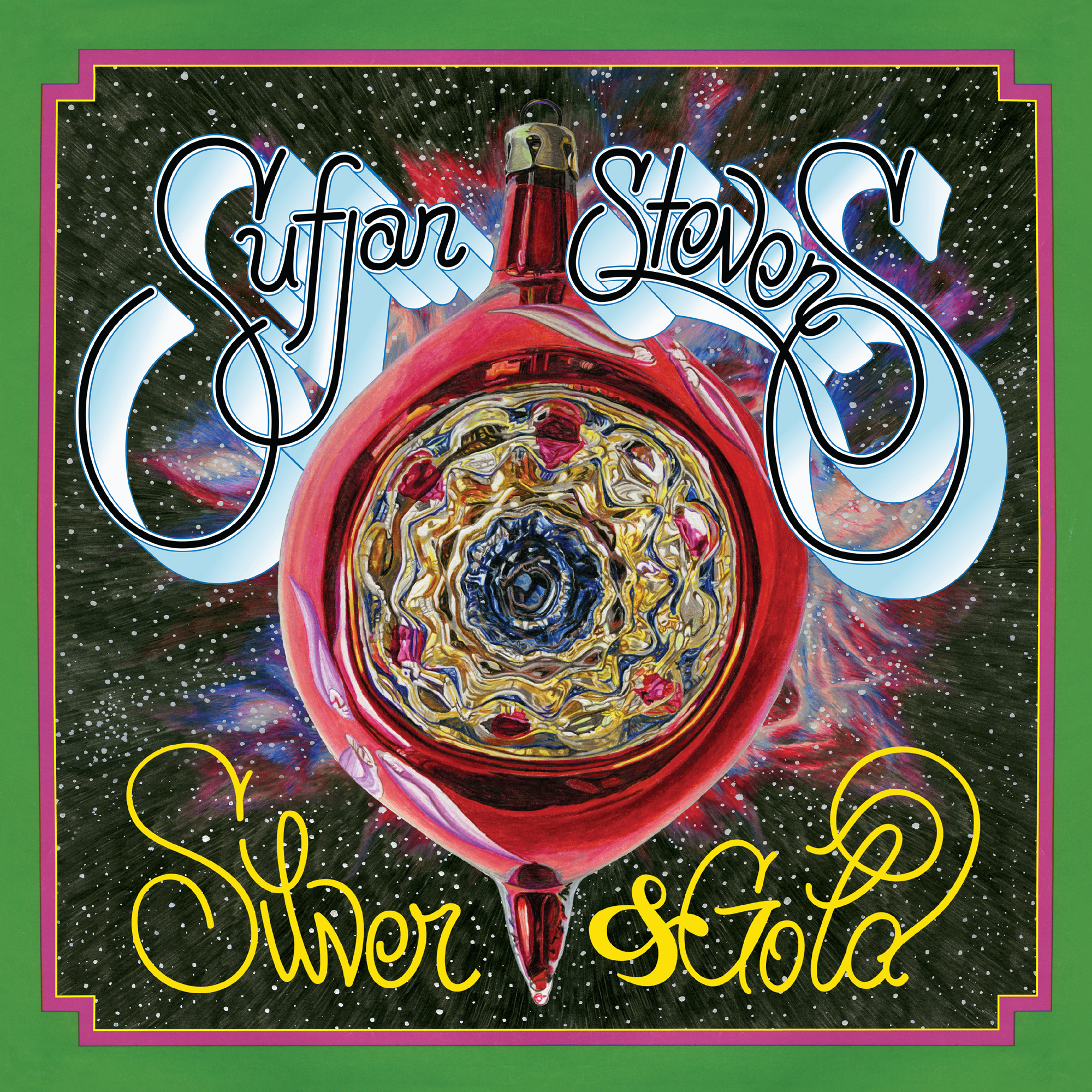If Christmas music is about evoking warm-fuzzies to lighten the anxiety of the holidays, then “Silver and Gold” is not the album for you. It has songs about the holidays, but they are not songs for the holidays.
Sufjan returns to Christmas songs with incredible results
Back in 2006, Sufjan Stevens released the first part of his Christmas collection. Forty two tracks you could sing along to with your grandma and your 6-year-old cousin while maintaining your musical “cool.” This album is his follow up: I do not recommend listening to this with your grandma and 6-year-old cousin.
On Nov. 13 the professed Christian and indie favorite released the follow-up Christmas set of 59 songs. There are still some traditional carols, but the album consists mostly of his originals. The album is very abstract, with more electronic experimentation and complexity than anything I’ve heard before. The lyrics are muddled in what is presumably the conflict between what one believes and the way the world is — a backlash of the degradation of Christmas has made for a heavy-hearted, cynically smiling Stevens.
Songs are closer in tone to his more recent work
Much of this album might sound foreign to fans of his early work. It affirms the direction of a previous album, “The Age of Adz,” lacking the pleasant tunes and croons that beguiled me initially to Stevens’ fan wagon. However, Stevens is the kind of artist that gets me to invest in his personality. With this new album, I am discovering new mental territory alongside the artist with his musical musings and washy auto-tune. His music is getting more interesting, but I can’t help but lament that Stevens will never be the same artist that recorded the first Christmas album.
However, it is not entirely difficult to listen to. Stevens recorded “Gloria,” the first disc of the set, before his “Age of Adz” musical makeover, and it’s the kind of music that makes you smile without you realizing it. It has one of my favorite renditions of “Auld Lang Syne,” and “The Midnight Clear” is a joyous song.
The second disc, “I Am Santa’s Helper,” is the most confused. It lacks a cohesive musicality and generally falls flat to discordant children choruses of Christmas classics in a way that makes the first listen difficult and a second listen impossible. Perhaps it’s an intentional dysfunction, but it comes across as an artist confused with his music and with himself.
The third disc, “Christmas Infinity Voyage,” finds its ground in more electronic territory and cynically reinterprets Christmas classics: “Do You Hear What I Hear?” and “Joy to the World” were particularly ironically depressive. However, the musicality of it is much more cohesive than the preceding disc and listening through is a musical wonder. Stevens weaves in a cacophonous disintegration to more than half the tracks that makes me wonder what a Radiohead Christmas album would sound like.
Stevens has no need for the safe or conventional
The last two discs move back more towards a traditional Stevens orchestration with a sense of humor, and are my favorites of the collection. Disc 4, “Let it Snow,” is heavily chorale-based and sticks with the holiday classics but recorded in such a way to sound a little eerie. Disc 5, “Christmas Unicorn,” has one of my favorite Stevens songs: the eponymous track. It is a 12-minute epic that combines everything good about Stevens and then weaves perfectly in a cover of Joy Division’s “Love Will Tear Us Apart.” It is the first truly great modern holiday epic.
Most artists, when recording a holiday album, stick with what is safe and expected. Stevens laughs at this principle. With this 2012 collection, he faces the holidays directly with the seriousness of an artist and the criticality of a Christian affronted by the irreverence of Jesus’ birth. He’s not messing around.
It’s hard to really review this album because each part is so different. But that being so, you gain insight into the artist’s development in terms of his music and in terms of his attitude toward the holidays. Also, Stevens confronts us with our shallow view on the holidays and hits us with a musical opus that evokes emotions about the holidays we tend to repress. Listening to these songs, you have to ask, what does this artist see about the holidays that makes him feel this way? Whether or not it is something worth seeing comes after we can look from the artist’s perspective.
The artist helps us see. Stevens helps us see not only with banjos, electronic dissonance, eerie chorus sweeps and ambiguous lyrics, but also with this vulnerable display of his conflicted soul and his musical prodigy as he invites us into his eyes so that we can — as the Christmas song says — see what he sees.







